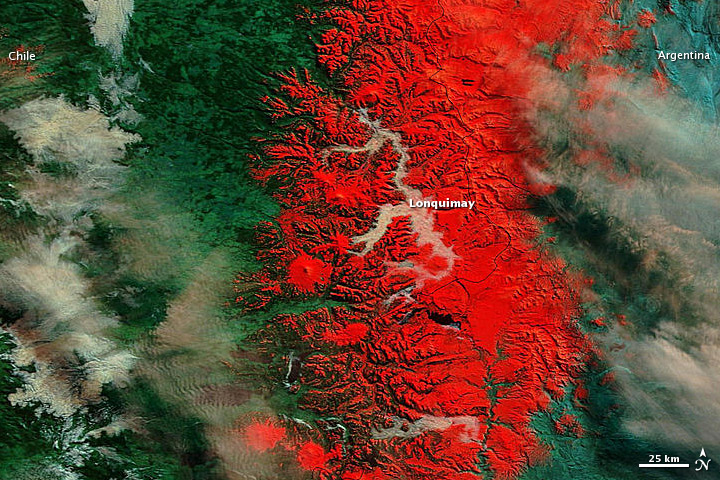
© Earth Observatory, NASAAcquired 22nd July
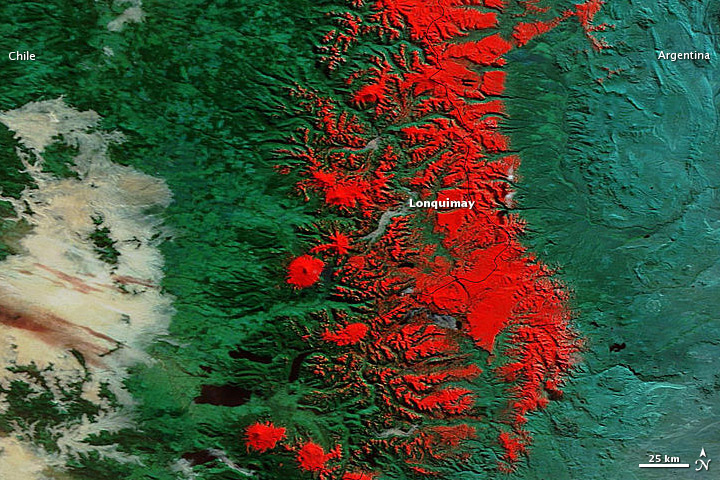
© Earth Observatory, NASAAcquired 8th July
In what the interior minister described as a "white earthquake," heavy snow blanketed parts of Chile in July 2011. Snow was 2.3 meters (7.5 feet) deep in the city of Lonquimay, CNN reported.
Santiago Times reported that some areas received four months' worth of snowfall in just four days.
The Moderate Resolution Imaging Spectroradiometer (
MODIS) on NASA's
Terra satellite captured these images of the region around Lonquimay on July 22, 2011 (top), and July 8, 2011 (bottom).
Using visible and infrared light, these images better distinguish between snow and clouds than a natural-color image would. Snow and ice are bright red or red-orange. Clouds range in color from off-white to peach. Vegetation is green.
Both images show winter conditions but, compared to the image from July 8, the scene from July 22 shows snow blanketing a significantly larger area around Lonquimay. On July 22, fog fills multiple valleys in between the snow-capped peaks.
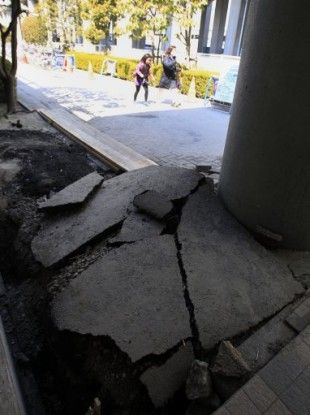
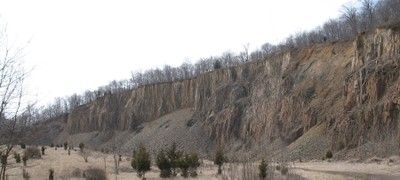
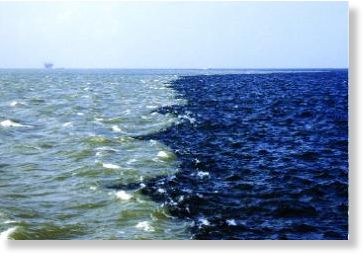
Comment: These are the volcanic eruptions observed on land in the past two months: Most volcanoes are under the world's oceans. Still think localised warming is man-made?